Other names for youth xanthogranuloma
Juvenile xanthogranuloma (JXG) has also been called naevoxanthoendothelioma, multiple xanthoma, juvenile xanthoma, multiple eruptive xanthoma in childhood, congenital xanthoma tuberosum, naeviform and juvenile giant cell xanthoma granuloma.
What is juvenile xanthogranuloma?
Juvenile xanthogranuloma is a non-Langerhan cell type histiocytosis (Class IIb). It presents as skin lesions predominantly in infants and young children, more frequently in males, and is present at birth in 20% of cases. However, 10% of the cases are adults. It is more common in Caucasians than in those of Eastern origin. The cause is unknown.
At first, the lesions are soft, pinkish bumps, but later they develop a yellowish appearance and may become scaly. Most are less than 0.5 cm in diameter (papules), but giant nodules it can be as large as 2 cm. They can arise anywhere on the body, but appear most often on the trunk and upper extremities. Occasionally they also appear in the eyes or internal organs.
Juvenile xanthogranulomas
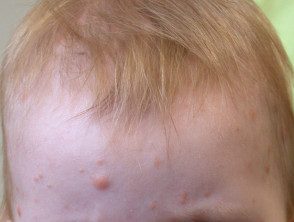
Juvenile xanthogranuloma
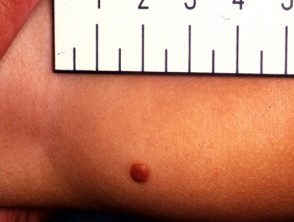
Juvenile xanthogranuloma
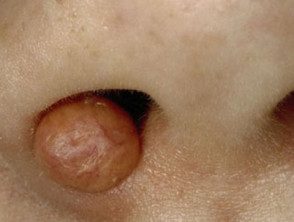
Juvenile xanthogranuloma
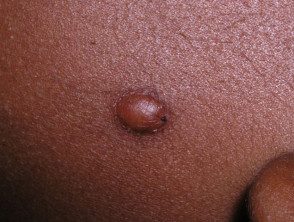
Juvenile xanthogranuloma
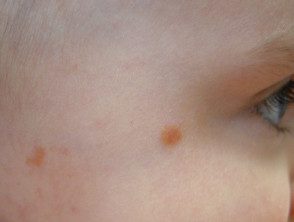
Juvenile xanthogranuloma
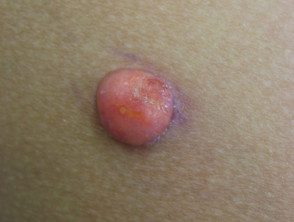
Juvenile xanthogranuloma
Differential diagnosis juvenile xanthogranuloma
Juvenile xanthogranuloma is difficult to distinguish from several other conditions.
- Benign cephalic histiocytosis
- Generalized eruptive histiocytosis
- Papular xanthogranuloma
They are increasingly viewed as the same condition.
| Benign cephalic histiocytosis |
|---|
|
| Generalized eruptive histiocytoma |
|
| Papular xanthogranuloma |
|
How are these disorders diagnosed?
Juvenile xanthogranuloma has a characteristic appearance on dermoscopy, known as "sunset," in which there is a yellowish central area surrounded by a reddish periphery.
The diagnosis of juvenile xanthogranuloma and related conditions can be confirmed by a skin. biopsy. Lesions are composed of collections of histiocytes; see juvenile xanthogranuloma pathology. In older lesions, the histiocytes may appear foamy, filled with lipids (fat) or very enlarged (giant cells)
Despite the fat-filled histiocytes in the skin, lipid levels in the blood are quite normal, and juvenile xanthogranuloma and related disorders are generally not associated with any serious abnormalities. However, the 20% also has latte macules. Multiple latte birthmarks are associated with neurofibromatosis Type 1.
Treatment of juvenile xanthogranuloma
Unless they occur in the eyes, juvenile xanthogranulomas are harmless growths and shrink and then eventually disappear for 2–3 years, usually without scarring.
Although individual lesions can be cut, this will leave a scar. Removal is seldom necessary.
